Defying Gravity encourages to use material properties blending in the ability of water to go against gravity to humidify a space for cooling thus reducing the energy consumption.
//Issue
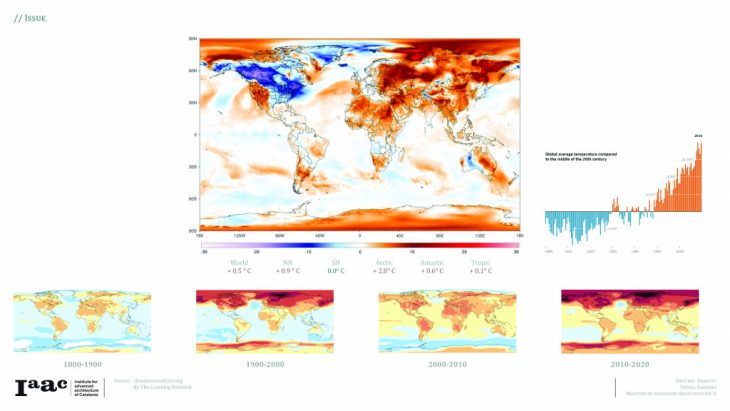 The temperature of the globe is rising at an increasing rate. Increasing upto an average of 2 degrees.
The temperature of the globe is rising at an increasing rate. Increasing upto an average of 2 degrees.
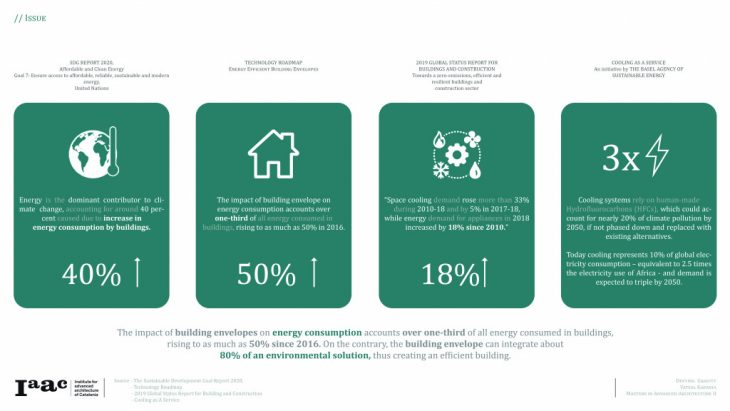 Energy is the dominant contributor of climate change and around 40% increase in energy is consumed by buildings. Impact of building envelop caused around 50% rise sinc 2016, within that energy consumed for cooling a space rose by 18%. BUt on the contrary building envelop can integrate about 80% of Environmental Solutions.
Energy is the dominant contributor of climate change and around 40% increase in energy is consumed by buildings. Impact of building envelop caused around 50% rise sinc 2016, within that energy consumed for cooling a space rose by 18%. BUt on the contrary building envelop can integrate about 80% of Environmental Solutions.
//Issue + Framework
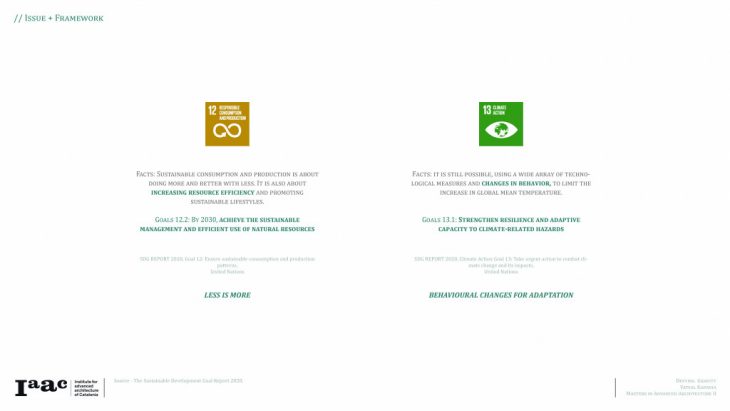 In order to reduce the consumption of energy being used in the mechanical driven adaptable architecture, it becomes necessary to investigate the adaptability of various systems in nature with extreme environment
In order to reduce the consumption of energy being used in the mechanical driven adaptable architecture, it becomes necessary to investigate the adaptability of various systems in nature with extreme environment
// Extreme Environments
To check the adaptability of extreme environments 1 specie and 1 phenomena were considered to analyse the cause of adaptation.
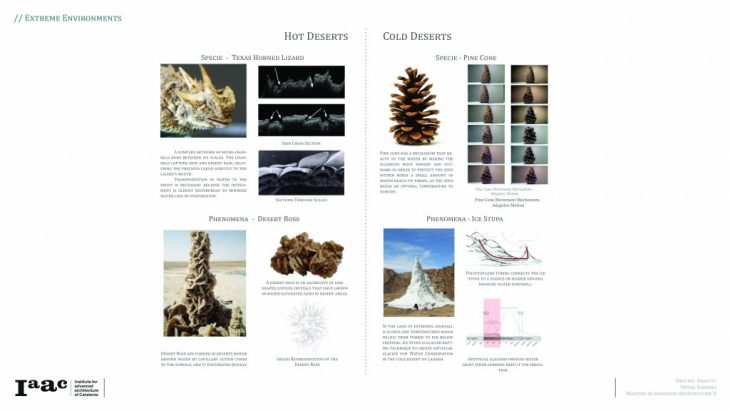 Understanding of various natural and man made systems that help adapt in the extreme environments, water is found to be the major element with its ability to go against gravity by the process of capillary action
Understanding of various natural and man made systems that help adapt in the extreme environments, water is found to be the major element with its ability to go against gravity by the process of capillary action
// Scientific interest
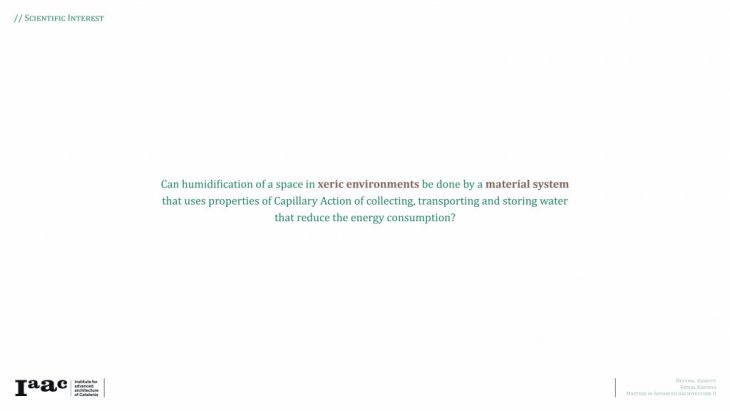
// Methodology Diagram
Methodology set thus leads to the constructive steps to be carried in 3 segments of Research.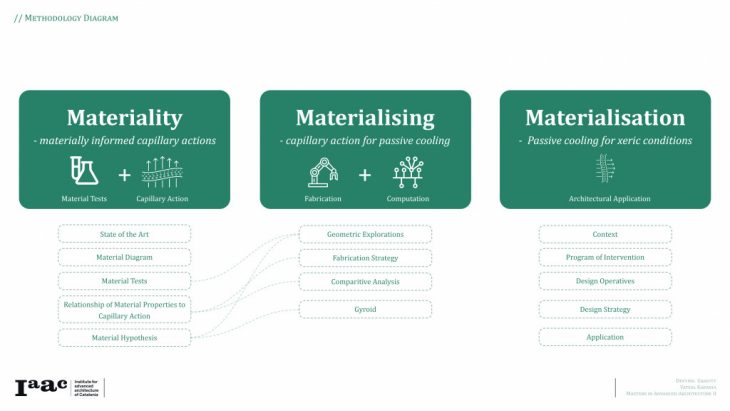
- Materiality – materially informed capillary actions
- Material Tests
- Understanding and Implementing Capillary Action
- Materialising – capillary action for passive cooling
- Fabrication
- Computation
- Analysis
- Materialisation – passive cooling for xeric xonditions
//Materiality – materially informed capillary actions
// State Of The Art
Capillary Action potentially explored in different scale ranging from Material Scale To a Building Scale to understand its properties.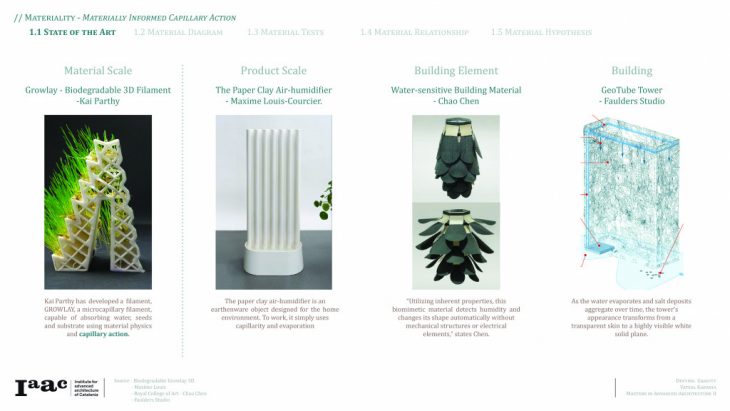
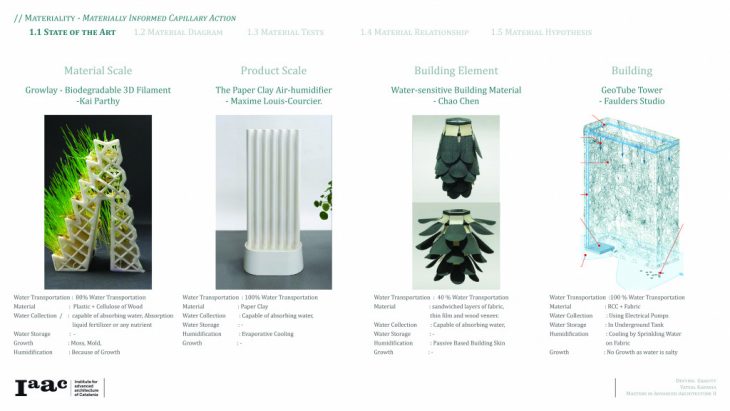
//Material Diagram
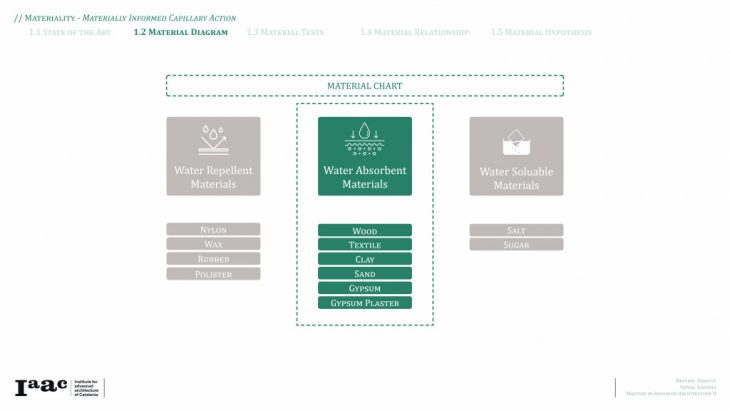 Classified in 3 parts, Water absorbent materials have the highest potential of capillary action.
Classified in 3 parts, Water absorbent materials have the highest potential of capillary action.
//Material Tests
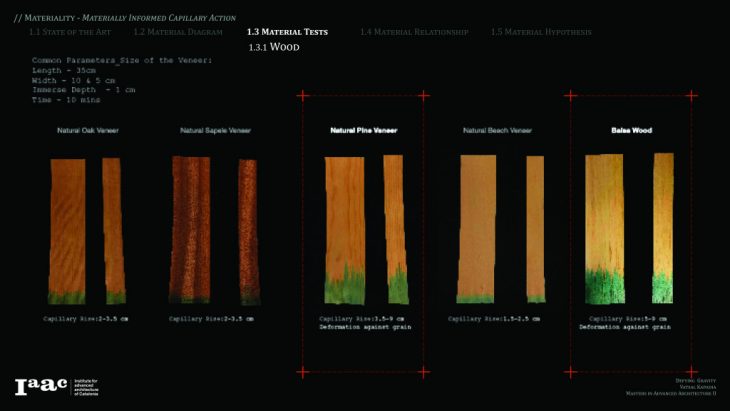
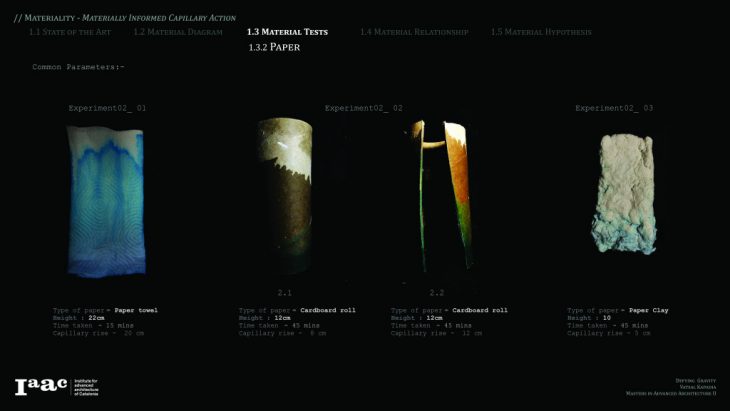
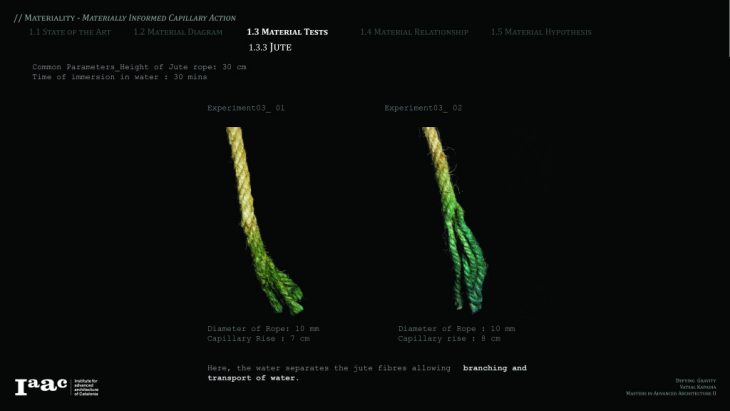
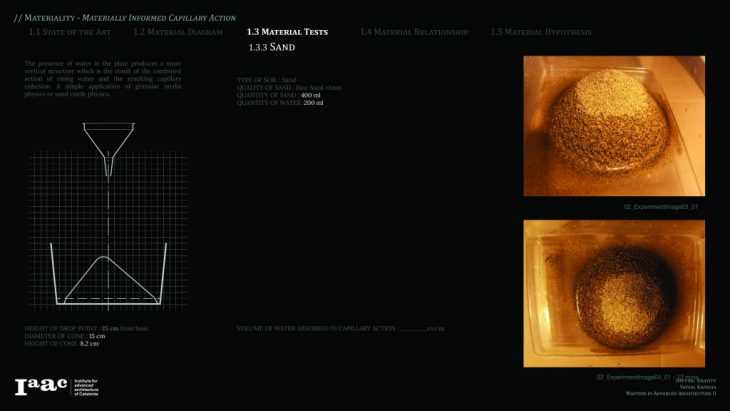
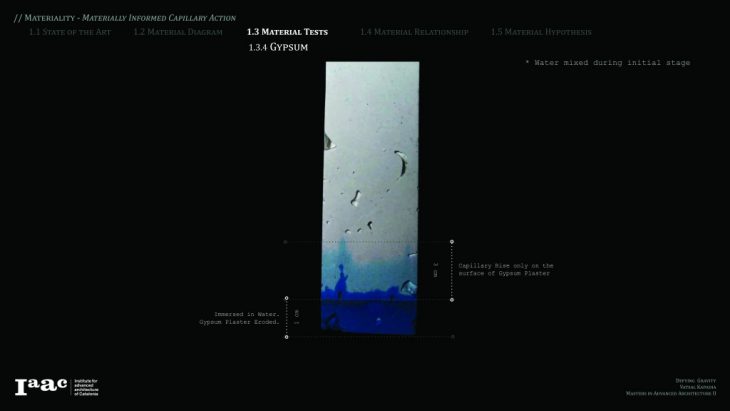

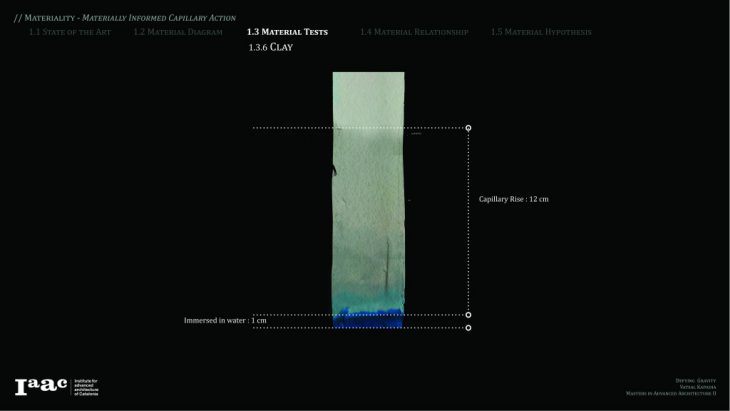
// Material Relationship
Relationship of capillary rise to Porosity
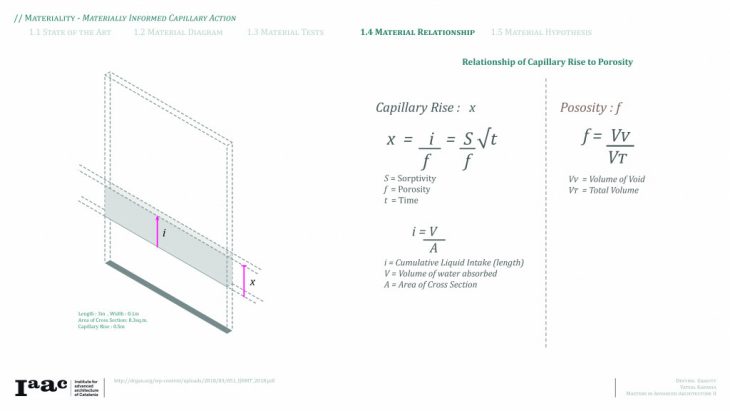
//Material Hypothesis
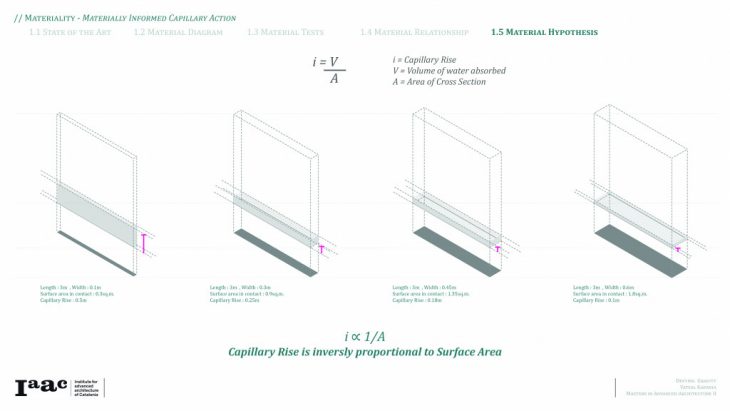 Capillary Rise is inversly proportional to Surface Area
Capillary Rise is inversly proportional to Surface Area
//Materialising – capillary action for passive cooling
//Geometric Explorations
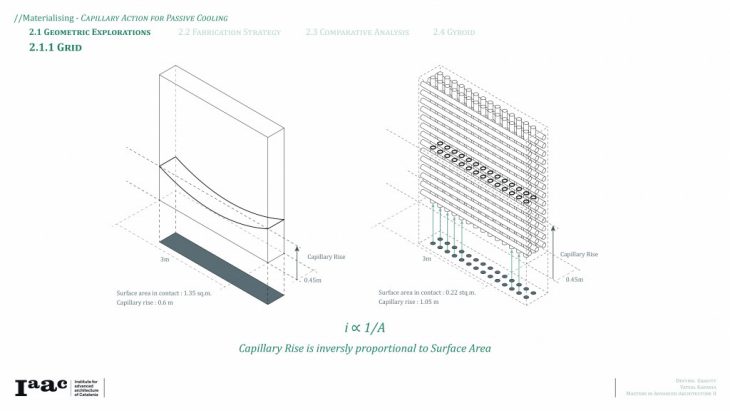 Geometrically Less surface area in the bottom to increase the capillary rise.
Geometrically Less surface area in the bottom to increase the capillary rise.

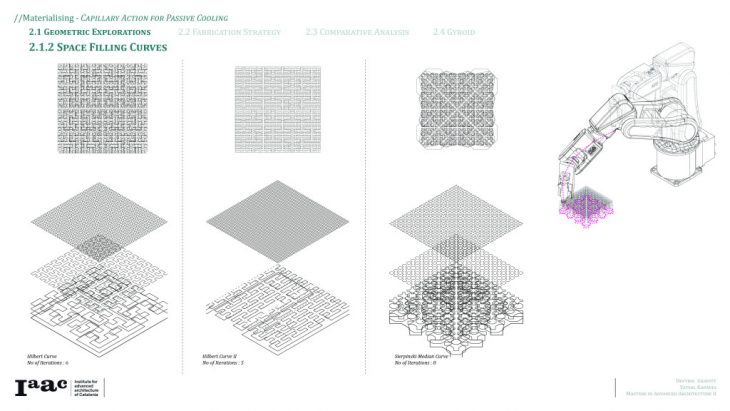
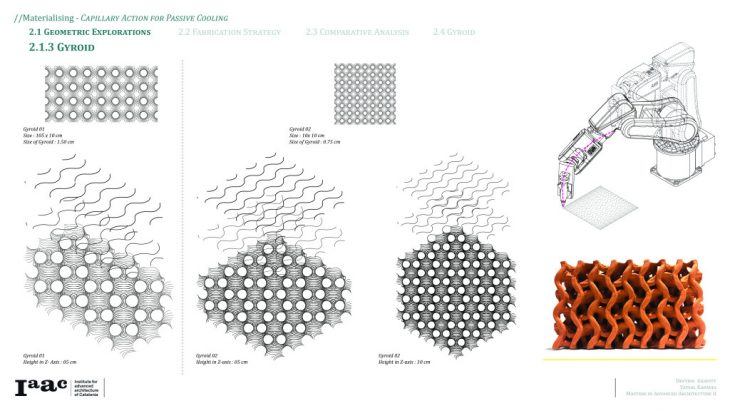
//Fabrication Strategy
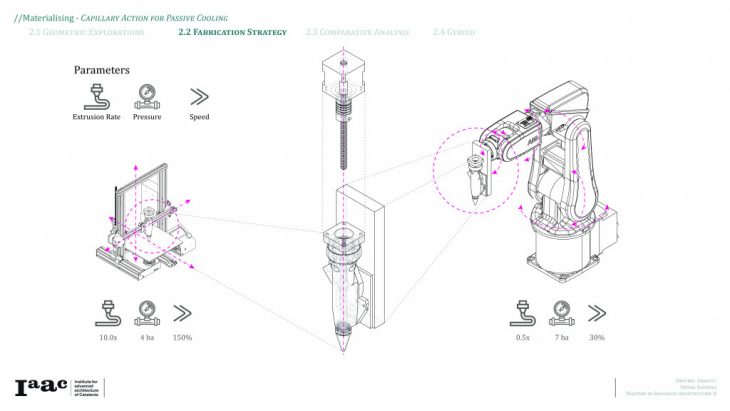 3D Printing strategt in 3d Printer and Robotic Arm using different parameters of extrusion rate , pressure and speed were used.
3D Printing strategt in 3d Printer and Robotic Arm using different parameters of extrusion rate , pressure and speed were used.
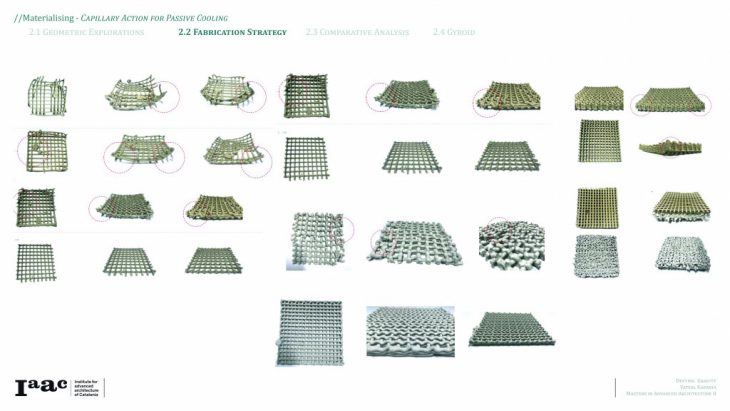
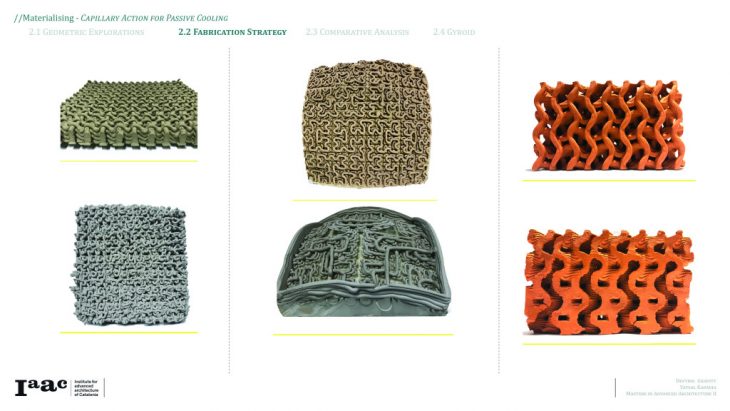 Its was observed that the Printed Parts of Space Filling Curves were very fragile to withstand itself. Hence Grid and Gyroid were selected for further analysis.
Its was observed that the Printed Parts of Space Filling Curves were very fragile to withstand itself. Hence Grid and Gyroid were selected for further analysis.
// Comparative analysis
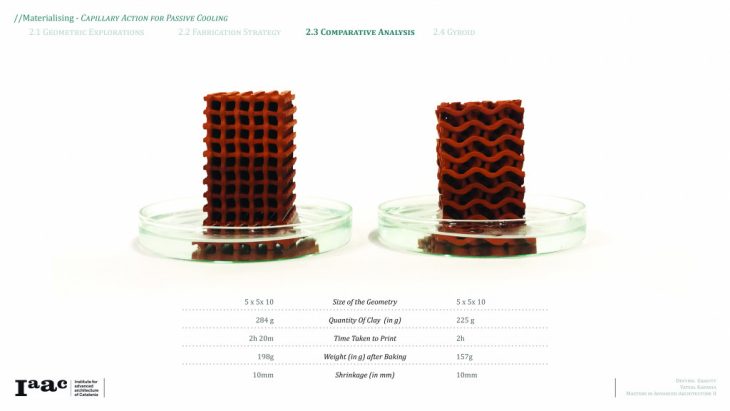
Thermal Imaging analysis between Grid and Gyroid were done to check the Capillary Rise, Temperature Drop, and Water Retention in the Geometry.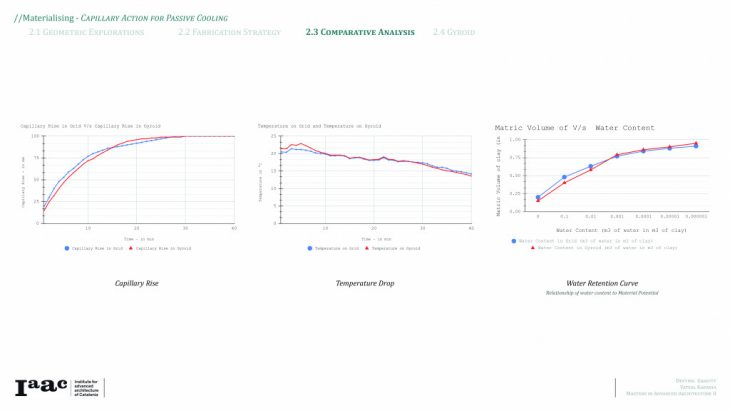
// Gyroid
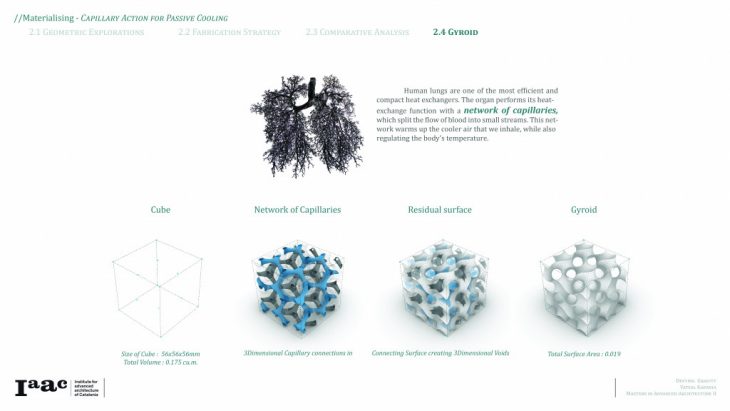 A triply periodic surface made out of a network of capillaries thus resulting in a Minimal Surface – Gyroid.
A triply periodic surface made out of a network of capillaries thus resulting in a Minimal Surface – Gyroid.
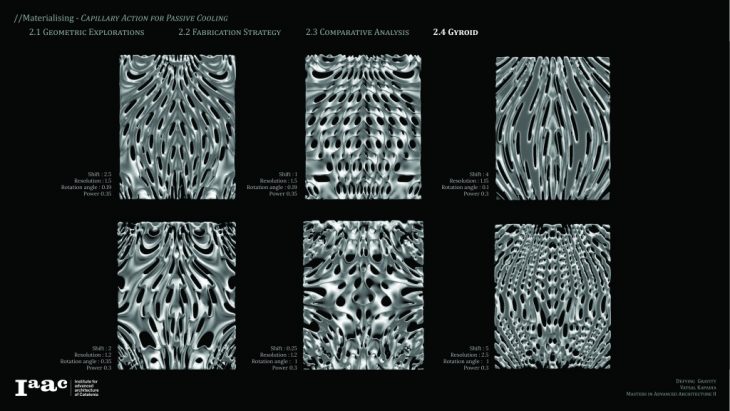 Geometric Experiments of Gyroid for understanding the pore formation.
Geometric Experiments of Gyroid for understanding the pore formation.
Traditional Jali Patterns from North West India.
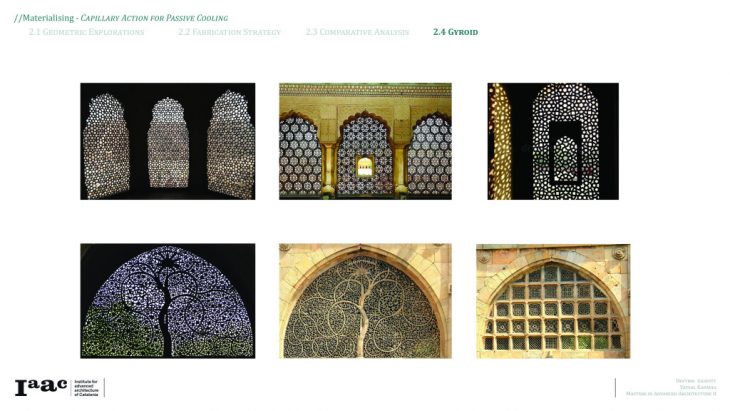 Due to the small intricate openings there caused a drop of temperature in the interiors thus resulting in cooling of the space.
Due to the small intricate openings there caused a drop of temperature in the interiors thus resulting in cooling of the space.
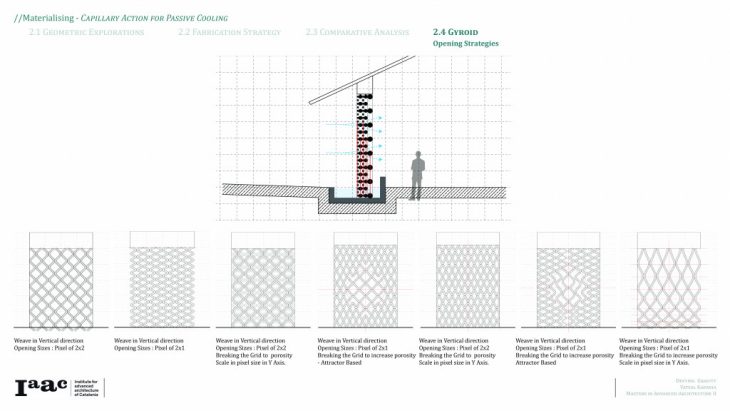 Taking inspiration of the Traditional Jali Patterns from North West India, Opening strategies were explored to humidify a space.
Taking inspiration of the Traditional Jali Patterns from North West India, Opening strategies were explored to humidify a space.
Exploring the Opening Strategies.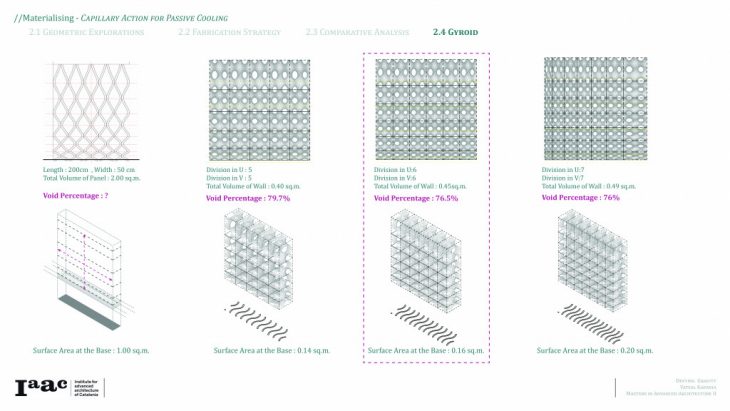
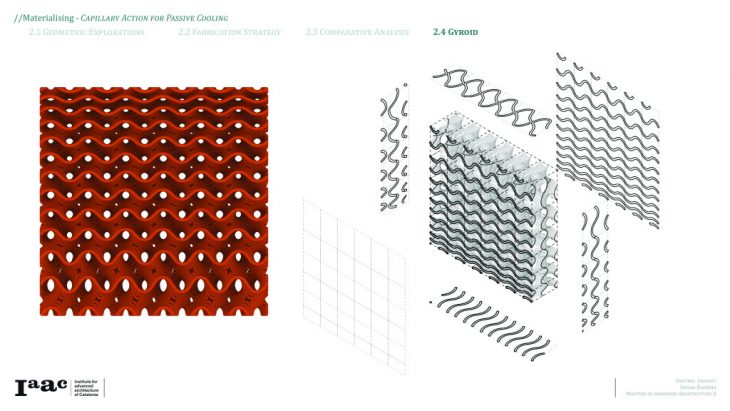
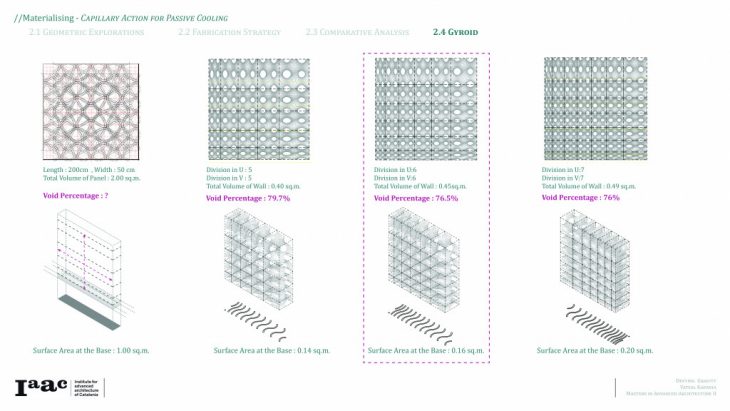
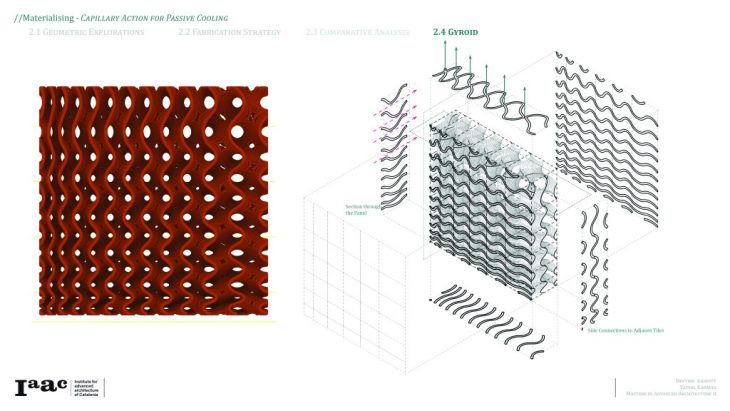
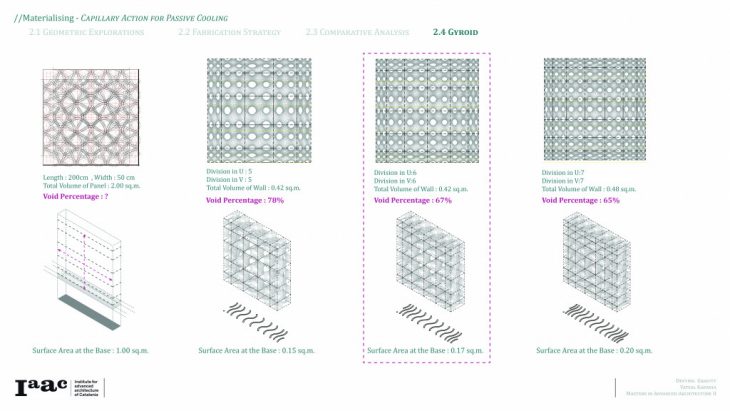
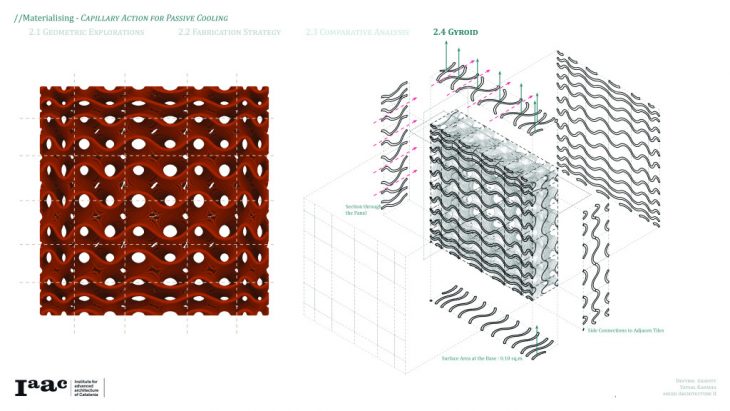
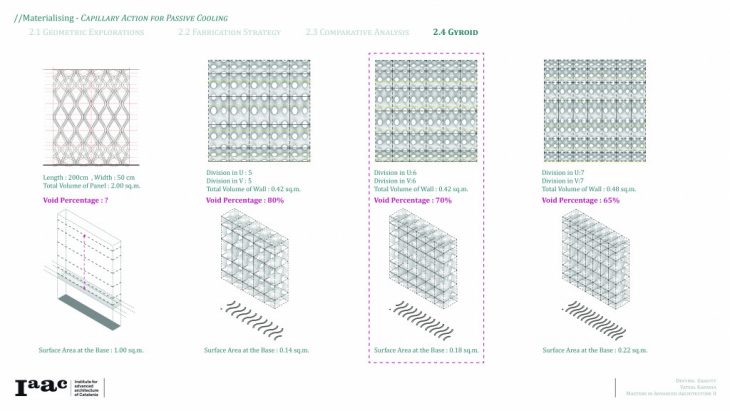
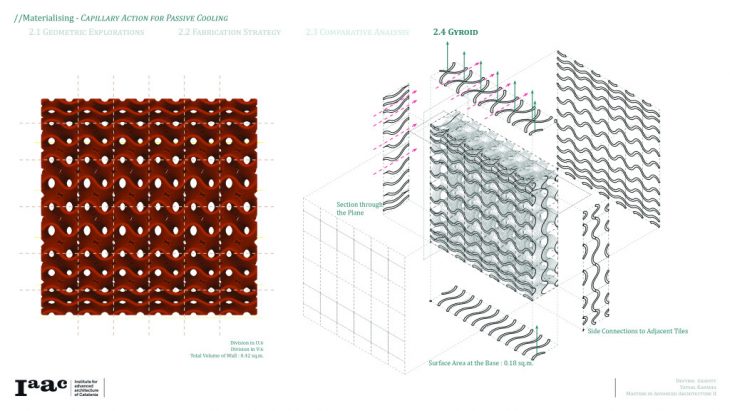 Joinery Details and Connections
Joinery Details and Connections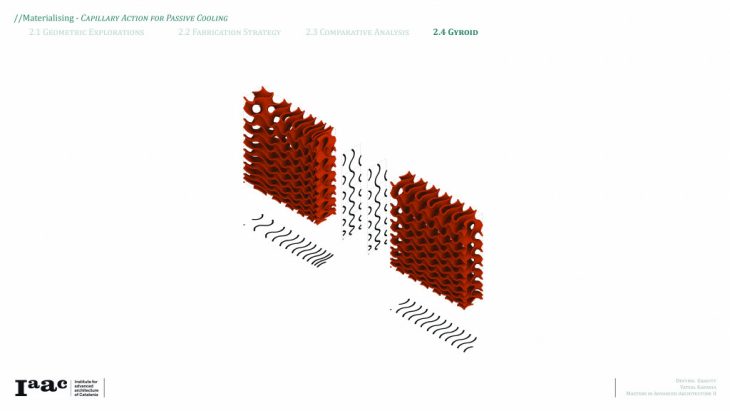
//Materialisation – passive cooling for xeric xonditions
// Context
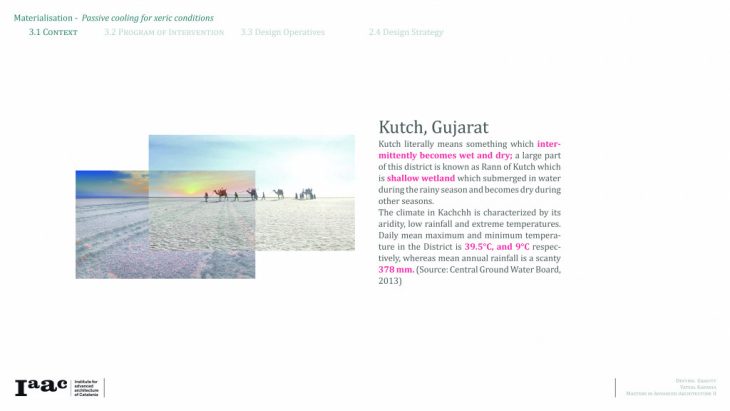 To use the phenomena of capillary action into an Architectural Intervention, Xeric context of Kutch in Gujarat, India was selected as Kutch literally means something which intermittently becomes wet and dry.
To use the phenomena of capillary action into an Architectural Intervention, Xeric context of Kutch in Gujarat, India was selected as Kutch literally means something which intermittently becomes wet and dry.
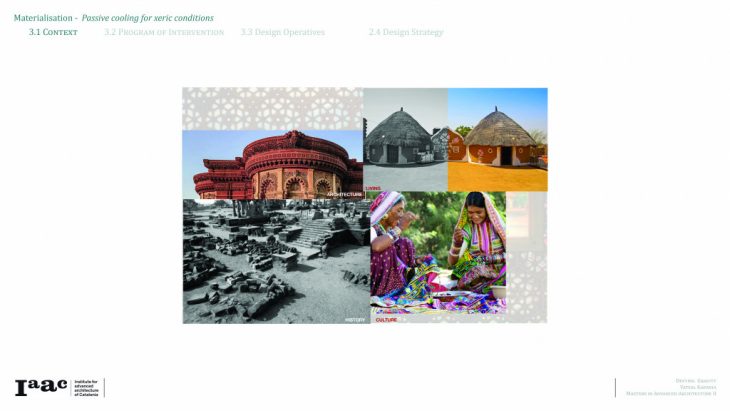
Design for Critical Months.

Dholavira – Indus Valley Civilization Town – Decoding The Water Heritage of Dholavira
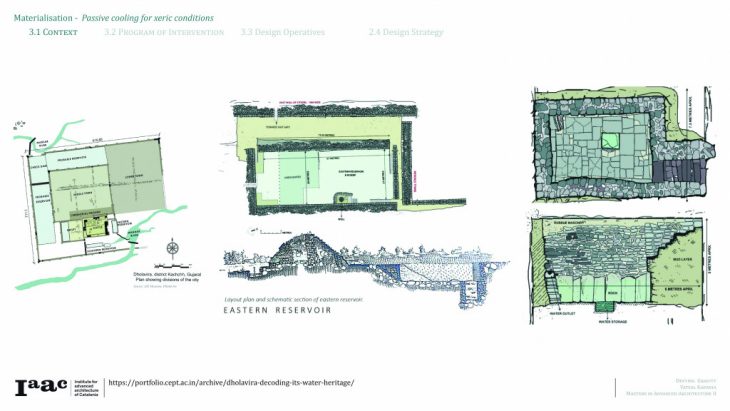
Thus understanding the pattern of ground water becomes essential as Kutch waters dewaters through the year.
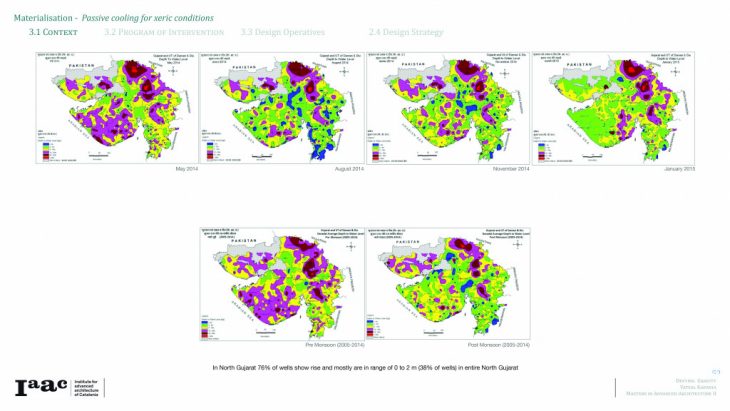
Proposed Sections depening to the Proximity to Rann of Kutch.
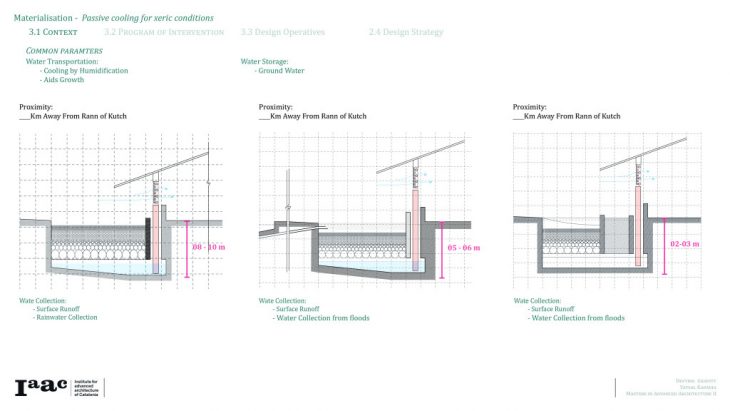
//Program Of Intervention
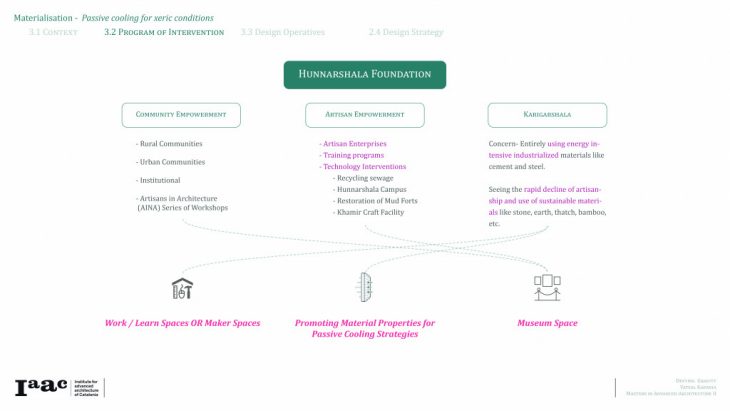
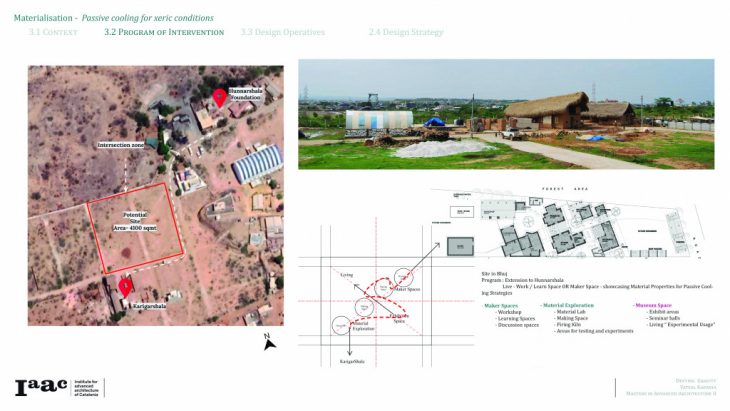
// Design Operatives
Understanding and decoding Bhunga – A Kutchi Traditional House.
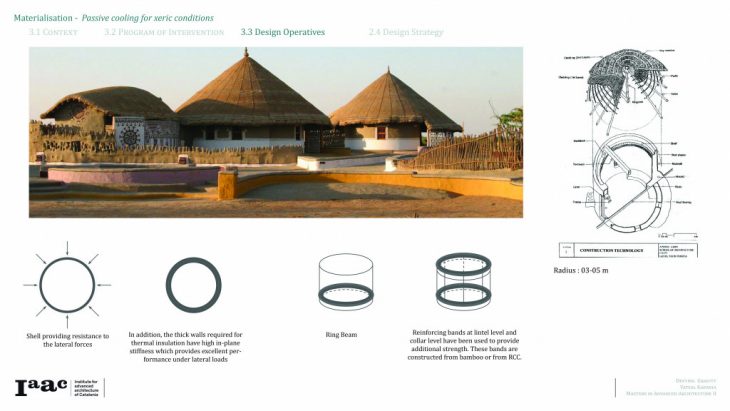
Wind and radiation Anaysis
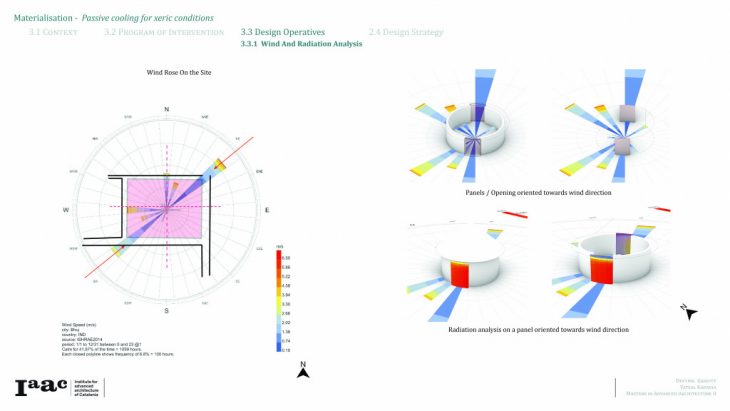
Design Hypothesis
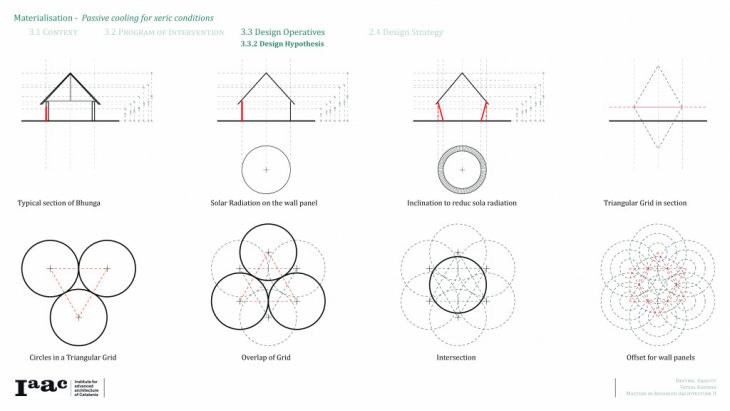
Design
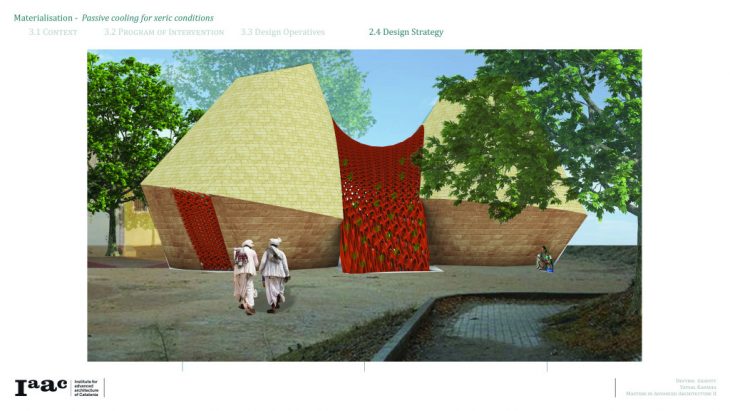
Defying Gravity : Natural Humidification Through Material Systems is a project of IAAC, Institute for Advanced Architecture of Catalonia developed in the MAA02 2019/21 by Student: Vatsal Kapadia and Faculty: Marcos Cruz and Kunaljit Chadha